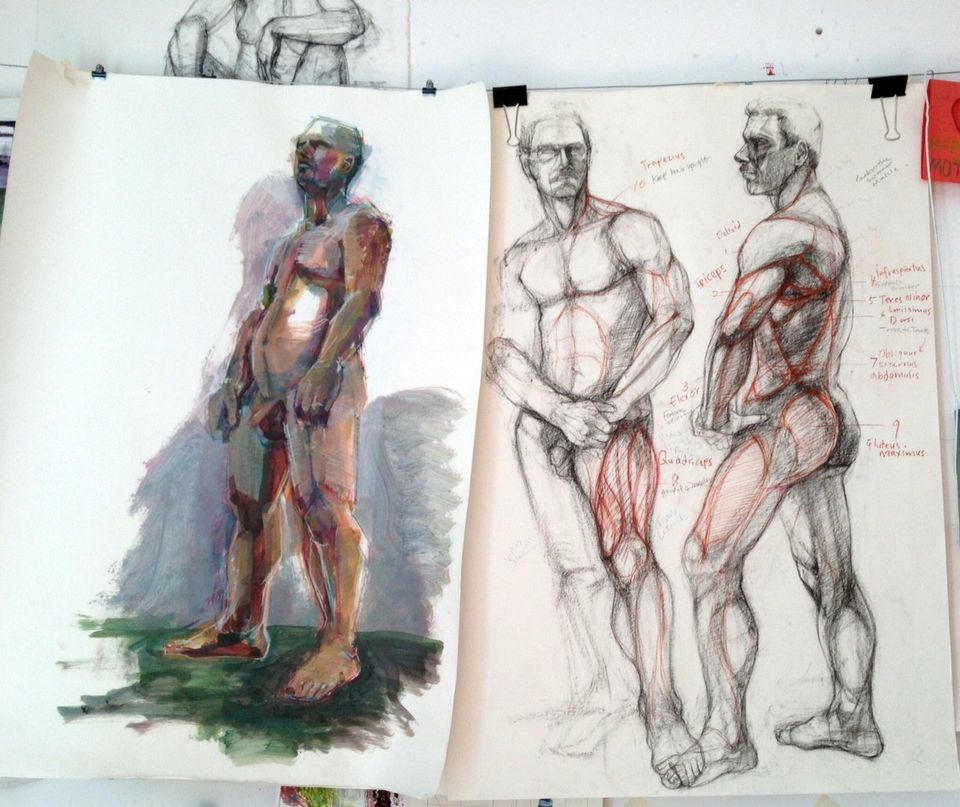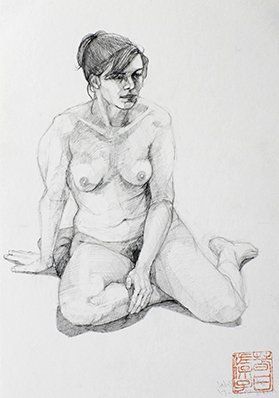Artist Spotlight: Sahoko Blake
February 25, 2020
Everyone’s work is deeply idiosyncratic: in our regular Spotlight segment we explore artists’ experiences and inspiration to understand what defines and inspires their unique styles.

Can you give us a brief background on yourself?
I am Japanese and I studied art literature & fine art. I moved to Ireland in 1996, and since then I have exhibited extensively here and abroad, including three solo shows and the RHA Annual exhibitions in 1999, 2002, 2005 and 2013. I was an invited artist to the RHA studio residency in 2010. I have worked as a tutor on advanced drawing courses in the National gallery of Ireland since 2007, in addition to delivering Life Drawing classes at the Alexandra College, Sallynoggin College, and Royal Hibernian Academy. I have also worked with a documentary film company that specialises in underwater films.
What kind of influence does your location have on your career?
I love living by the sea.
What skills or techniques do you find most useful in your line of work? Do you use primarily traditional or digital methods to create your artwork?
I only really work with non-digital media, however, I think that the most important skills are being able to make quick observations.
How can people who are interested in discovering more of your work find it?
Schoolhouse for Art’ is in essence a facility for the study and exploration of arts and crafts. Located in ‘the old schoolhouse’ in the heart of Enniskerry village, it is an exhibition space and a meeting place where images and ideas mingle. It caters for all ages and all abilities. The former school playground is a natural arena facing the clock tower, a three-dimensional canvas to display an evolving gallery of large pieces of sculpture. ‘Schoolhouse for Art’ is also a host to visiting artists from across the globe who want to paint the surrounding inspiring countryside and experience the unparalleled Irish hospitality.
Scriba is a revolutionary digital stylus that is ergonomically designed to comfortably fit your hand and uses unique Squeeze-Motion technology. Order here.
Articles

In the period since COVID forced many of us back home and out of the office, remote work has become the new norm for many. The flexibility of working from home, especially for those with small children, is very compelling, but making a productive workspace is more than setting up a desk in the spare room. More people are seeking to create functional and comfortable workspaces in their homes, however, it can be difficult to strike the right balance between a professional office space and a cosy home environment. Here are some tips for designing a home workspace that meets both of these needs: Dedicate a specific area for work Designating a specific area for work is essential for separating work from leisure time. This could be a separate room or just a corner of a room. It is important to make sure that the workspace is free from distractions and clutter, as this will help you stay focused and productive. Choose the right furniture Ergonomic furniture is key to a comfortable and productive workspace. Invest in a comfortable chair, a desk that is the right height, and a good-quality mouse and keyboard. If you are prone to back pain, consider a standing desk. Add personal touches Just because your workspace should be functional, doesn’t mean it can’t be personal. Add photos, plants, and other personal items to make the space feel like your own. This will help create a sense of comfort and make you feel at home in your workspace. Good lighting Good lighting is essential for a comfortable workspace. If possible, place your desk near a window for natural light. If not, invest in a high-quality desk lamp to provide bright, even light. Keep it organised An organised workspace will help you stay productive and focused. Use desk organisers, filing cabinets, and other tools to keep your work area free from clutter. A clean and organised workspace will also help you start each day with a clear mind. Consider your work style Think about the type of work you do and how you like to work. If you prefer a minimalist workspace, opt for a simple desk and a few basic supplies. If you need space for multiple screens and other technology, make sure you have enough room to work comfortably. Take breaks It’s important to take breaks throughout the day to avoid burnout. Step away from your desk, go for a walk, or do some stretching exercises to clear your mind and recharge.











